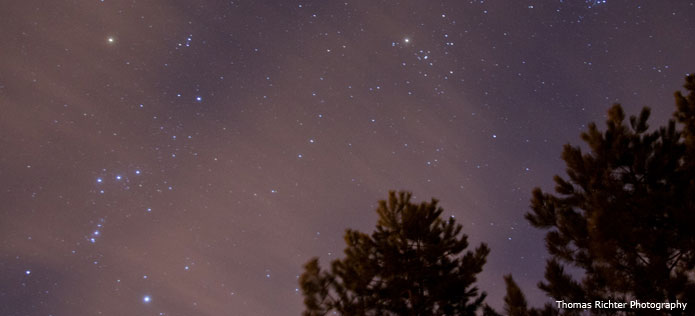
Does the sky look the same all night? Investigate this question with your child on a warm summer night.
What You Need
- 3 index cards
- Black marker
What You Do
- Draw Your House on Index Cards
Have your child draw identical pictures of the front of your house or apartment building on all three cards. Have your child include any front walkways, trees, or shrubs. - Draw the Sky
Go outside on a clear night. Face your home and look at the sky. On one of the index cards, have your child draw the stars and the moon as they appear in the night sky. - Repeat Step 2
Draw the sky again, on the second index card, an hour later. Draw it again, on the third card, another hour later. - Talk About What You Observed
Ask your child:- What is the same in your drawing? (The house or apartment building, walkways, trees, shrubs, etc.)
- What is different? (The position of the moon and stars in the sky.)
- What does this show? (The stars and moon seem to change position in the sky over time.)
- What else did you observe in the night sky? (Stars, constellations)
- Tell your child about ancient sailors that navigated by the stars they saw in the sky at night. These early explorers found their way because they knew which clusters of stars shone in the north, south, east, and west. They made up names and stories for these starry grouping that are now called constellations. Help your child try to find constellations like the Big Dipper.
- About 3,000 stars are visible to the naked eye, but you can find other things in the night sky as well. Tell your child that we can see some planets, such as Venus. A planet looks like a star, but it does not twinkle.

